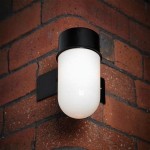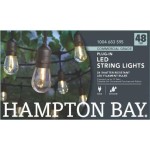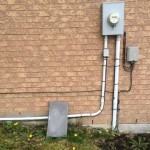Motion Sensor for Outdoor Lights: Enhancing Security and Efficiency
Outdoor lighting plays a crucial role in enhancing security and aesthetic appeal for any property. However, keeping these lights constantly illuminated can be wasteful and costly. Motion sensor technology offers a practical solution by automatically activating outdoor lights only when necessary, promoting energy efficiency and security. This article explores the functionality, benefits, and considerations involved in using motion sensors for outdoor lights.
How Motion Sensors Work
Motion sensors operate by detecting movement within their range. They typically utilize passive infrared (PIR) technology, which senses changes in infrared radiation emitted by warm objects, such as humans or animals. When a PIR sensor detects motion, it triggers a signal to activate the connected lights. The sensor usually features adjustable sensitivity and timer settings to fine-tune its response based on specific requirements.
The operation of a motion sensor for outdoor lights involves three key stages:
- Detection: The PIR sensor continually monitors infrared radiation within its field of view. When it detects a sudden increase in the amount of radiation, indicating movement, it triggers a signal.
- Activation: The signal from the sensor activates the connected lighting circuit. This triggers the lights to turn on, usually for a predetermined duration.
- Deactivation: After the designated time period, the lights automatically switch off unless additional motion is detected within the sensor's range. This cycle repeats as long as motion is present.
Benefits of Motion Sensors for Outdoor Lights
Motion sensors offer a range of advantages for outdoor lighting applications:
Enhanced Security
By automatically illuminating areas when movement is detected, motion sensors deter potential intruders and enhance security. The sudden activation of bright lights can startle and discourage unwanted activity. Motion sensors are especially effective for illuminating entryways, walkways, and other vulnerable areas around a property.
Energy Efficiency
Motion sensors help conserve energy by ensuring that outdoor lights are only on when needed. This can significantly reduce electricity consumption compared to leaving lights on constantly. The energy savings can translate into lower utility bills and a reduced environmental footprint.
Convenience and User-Friendliness
Motion sensors eliminate the need to manually switch outdoor lights on and off. They provide automatic illumination whenever required, offering convenience and ease of use. Additionally, they help eliminate the risk of forgetting to switch off lights, further contributing to energy efficiency.
Choosing the Right Motion Sensor
Selecting the right motion sensor for outdoor lights involves considering several factors:
Coverage Area
The sensor's detection range and field of view should adequately cover the area requiring illumination. Ensure the sensor's coverage aligns with the size of the space and the intended purpose of the lighting.
Sensitivity
The sensitivity level determines how easily the sensor detects motion. A higher sensitivity setting may be necessary for areas with a lot of background movement. For example, a sensor near a busy street might require a lower sensitivity to minimize false activations.
Timer Settings
The timer settings specify the duration for which the lights remain on after detecting motion. Consider the desired illumination time based on the application. For example, a long timer might be suitable for walkways, while a shorter timer might be appropriate for entryways.
Environmental Considerations
The sensor should be weatherproof and resistant to temperature fluctuations, particularly for outdoor installations. Look for sensors with IP ratings that indicate their level of protection against water and dust.
Compatibility
Ensure the motion sensor is compatible with the existing wiring and lighting fixtures. Check the sensor's specifications and voltage requirements to ensure compatibility.
By carefully evaluating these factors, individuals can select the most appropriate motion sensor to meet their specific needs and optimize the functionality of their outdoor lighting system.

Auraglow Pir Motion Sensor Up Down Outdoor Wall Security Light Warminster Stainless Steel Led Lighting

Philips Hue Outdoor Motion Sensor Review Macrumors

Motion Sensor And Dusk To Dawn Decorative Outdoor Lighting Deep Discount

Defiant 180 Degree Motion Sensor White Outdoor Security Light Df 5416 Wh A The Home Depot

Best Outdoor Motion Sensor Lights 2024 Security

The Best Outdoor Motion Sensor Lights In 2024 Popular Science

Dusk To Dawn Motion Sensor Outdoor Porch Lights With Gfci Waterproof Light Fixture Anti Rust Exterior Wall Mount 3 Modes For House Garage Bulb Not Included Com

Auraglow Black Arch Integrated Led Motion Sensor Pir Outdoor Wall Light Adobe Lighting

Best Motion Detector Lights Of 2024 Safewise

Auraglow Pir Motion Sensor Stainless Steel Up Down Outdoor Wall Security Light Warminster Black Led Lighting







